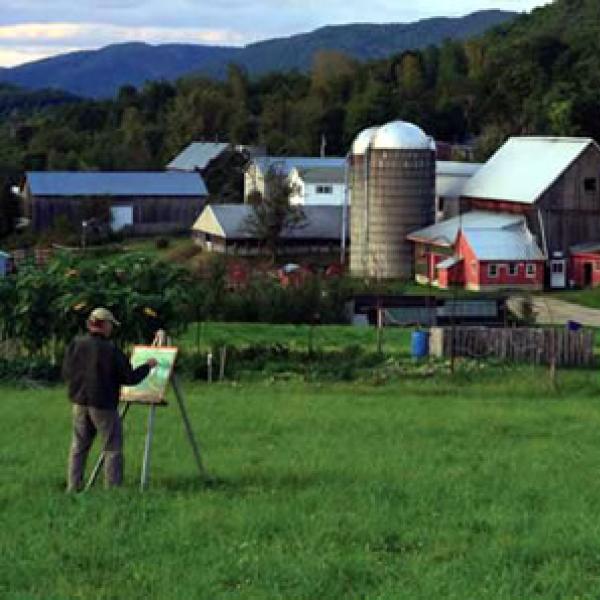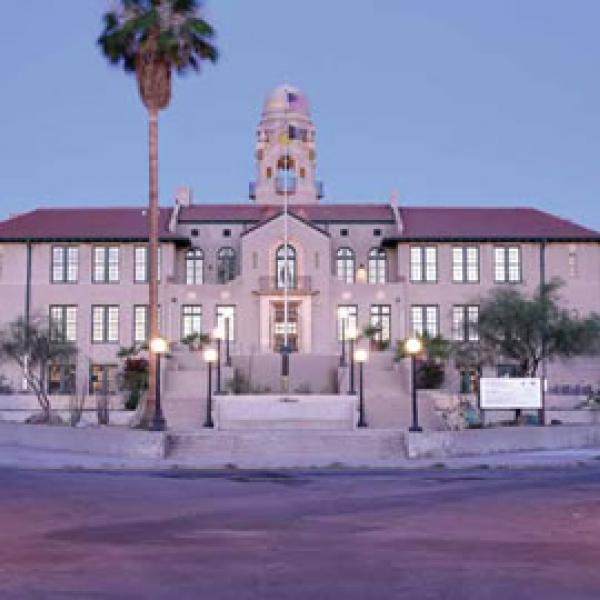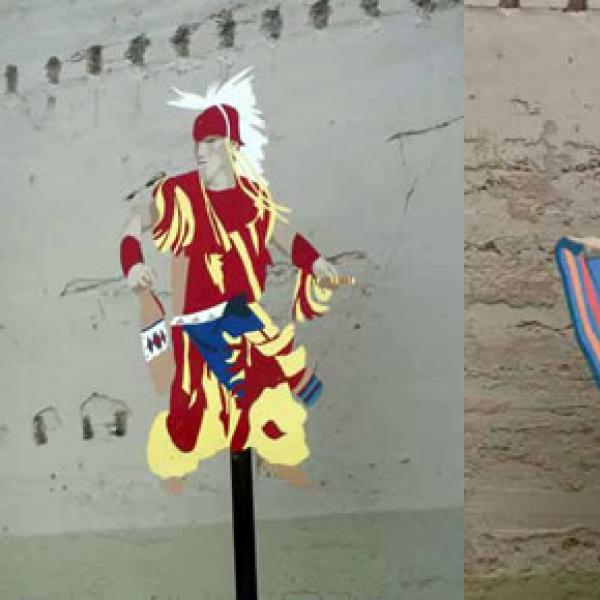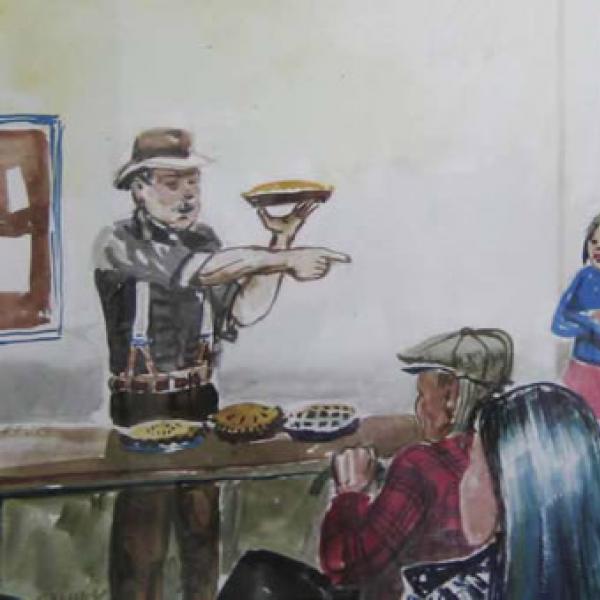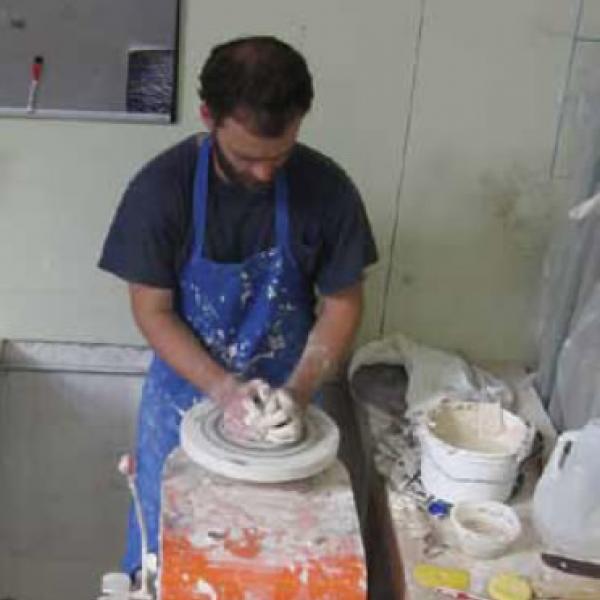Beginning the Conversation: Creative Placemaking in the NEA's Your Town: The Citizen's Institute on Rural Design
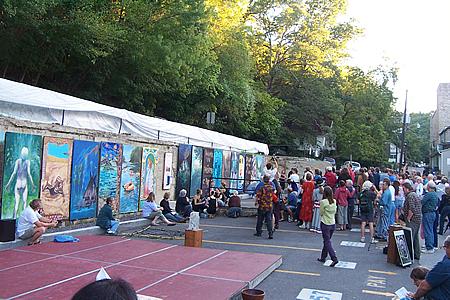
For rural communities -- rich in culture, heritage, and history -- utilizing the tools of creative placemaking seems only natural. Tapping into the cultural assets of a locale can stimulate both the economy and the community. Starting that process, however, requires community engagement often lacking in geographically fractured rural areas that don’t have a centralized commitment to community planning and design. Creative placemaking in these communities is about reconnecting people to the inherent culture of the place in which they live, recognizing the community's intrinsic cultural value, and giving residents the tools to use this knowledge and enrich their community.
Your Town: The Citizen's Institute on Rural Design, a partnership between the National Endowment for the Arts and the Department of Landscape Architecture at State University of New York Syracuse, is uniquely equipped to work with such communities. Since 1990, Your Town has presented participatory workshops led by design experts to assist with town planning and design issues in more than 60 rural towns and communities across the United States. These two-and-a-half day workshops activate community-wide conversations around design, ultimately leading to a rejuvenated and more united locality.
Eureka Springs, Arkansas, and Bitterroot Valley, Montana, are two communities that have used Your Town workshops as catalysts to initiate ongoing dialogues on planning, design, and community development. Though facing very distinct design challenges, each community illustrates the benefits of using creative placemaking solutions and the importance of community unification.
EUREKA SPRINGS, ARKANSAS
Eureka Springs, Arkansas, is a tourist resort based around Healing Springs with a local population of 2,000. Located in the Ozark Mountain region, the town is visited by some 800,000 tourists annually. The town also has a long history as an arts community, dating back to the Great Depression. A traveling WPA muralist fell in love with the town, encouraged other artist friends to move there, and established Eureka Springs as a haven for artists. Today, the town’s creative assets include the Eureka Spring School of the Arts, an opera company, and several other creative hubs.
In 2006, Eureka Springs started thinking about its creative economy in terms of building an arts and cultural district. The need to bring together the disparate but significant arts community was clear, but the obstacle of a geographically disjointed Main Street, and subsequently disconnected community, presented a problem. Since the Your Town initiative five years ago, the town has become more centralized and is working to become a fully established creative center. We spoke with Economic Development Coordinator and City Preservation Officer Glenna Booth who spearheaded the effort.
On the focus of the Your Town workshop
The Your Town workshop seemed like a good chance to combine preservation and economic development. We had a non-profit the year or so before [that] had a rural housing and economic development grant…to come up with some alternative types of economic development for our community. Eureka Springs is a tourist resort. It always has been, and it was founded as that. And tourism is pretty much our main industry. So this group hired a research team, and came up with the Creative Economy Concept for our town. That was in 2006 [and creative economy] was just starting to be thought about in different places. Part of the study that they created was to develop an arts and cultural district…. [T]he geography of Eureka Springs is very strange. There’s a long Main Street, and then there’s another street that cuts [it] that is more heavily commercial. The buildings are closer together, and that’s where the galleries are and the shops. That’s called Spring Street. And Main Street…has never been as heavily developed. There’s a lot of open space in it, which is really pretty.... [It] has a few galleries and a few restaurants, and just seems to have a lot of potential [as an arts] district. So that’s kind of what we focused on with our Your Town workshop.
"If you talk about building it, they will come and build it."
We used the Your Town workshop to bring together the community. A lot of different people from the neighborhood, city government came to explore ideas on community development and design…and got some ideas for the physical design of the neighborhood but also on how to raise awareness of community design and plans. Well, we thought, "If you talk about building it, they will come and build it!"
I think [the arts district] is slowly growing. There was never a huge infusion of cash to go into it. One of the things they had originally explored was tax increment financing as a way to get cash. And that was just determined to not really be something that would work. So it’s been pretty grassroots.
That was the model we used and in five years we’ve had two brand new galleries built, a little arts colony, a set of studios. A lot of renovation went into the live/work or gallery/studio spaces…. And the people that are moving in and living there are thinking of themselves as a neighborhood more than they did before…. It is starting to build an entity.
On results that make a difference
Although [North Main Street] is a commercial part of downtown, it did not have a sidewalk. With the study, and the Your Town [workshop] we did get a sidewalk on one side of the street. And that's made a huge difference. So now people park at the end. There's a beautiful parking lot, and there’s actually a little railroad at the end. There’s a lot more foot traffic, and it’s just made it look more like a commercial neighborhood. And there’s been some other things. We had a person who created an outdoor art gallery on one of the walls. It’s on the southern edge of North Main Street, and that has continued for several years…. We’ve had a beautiful 55-foot mural, Centennial Mural that was painted by the artist who came here in the '30s and his friends that had faded to almost nothing. And we were able to leverage some grants and get that restored as kind of the southern anchor of the district. And we’ve got some Preserve America grant money to do bannering and signage to label the neighborhood. So we’re trying to give it an identity; it’s not an overnight thing, but it does seem to be growing…. Art and cultural heritage [are] integral to the core of our town so we want them recognized and acknowledged in planning. We don’t actually do a whole lot of planning here. We're organic. Our population has a lot of people from someplace else. We don’t have that many people that were born and raised here -- people come here, and they come here because of what [Eureka Springs] is.
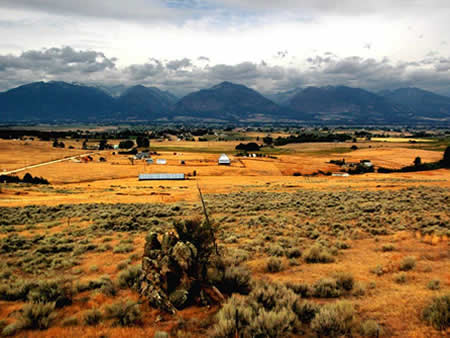
Heritage landscape near Hamilton, Montana, where a Your Town workshop took place. Photo courtesy of Ravelli Republic |
BITTERROOT VALLEY, MONTANA
Highway 93 is a derelict state route that runs across the Bitterroot Valley, 90 miles long and 10 miles wide along the western edge of Montana. "What if it were beautiful?" is the question asked by Kristine Komar, president of the Bitterroot Cultural Heritage Trust that brought Your Town to the Valley for a 2009 workshop in Hamilton, the county seat. Initially an effort to beautify the main artery of this seven-town community, the Hamilton Your Town workshop has since activated a community-wide conversation that extends way beyond the parkway. Here’s what Komar had to say on the benefits of the Your Town workshop.
On why Your Town worked for the Bitterroot Valley
We're small, and we don't want to build a big infrastructure. We want more to be opportunistic about providing resources. We've got a harsh climate here. We don't have any [certified local governments] and we don't have any arts councils in our valley. We have three incorporated cities in the county---so it takes a lot of building from the ground up. [Your Town] is sensitive to these different rural climates that oftentimes resent outsiders---it takes a great deal of skill to enter into a community and be relevant.
On bringing the community together
Our Your Town workshop…was all about relationships. We did informal recruitment: we didn't put ads in the paper. We went through informal networks in our community connections and heritage folks…. We shared our agenda, and offered it as an opportunity to really figure out how we could work in our interests and in the interests of the larger community at the same time. People were intrigued…but there were trepidations. And so we got people excited about it…. It's about being able to add, in a natural way, opportunities for people to learn and grow. It’s being able to offer something and try to get people to say, "Wow, so that's what I need."
On the tools of creative placemaking
We wanted the outcome to be people feeling like they wanted to work together and had ideas about how to do that and [had] some new skills…. It was our observation that formal planning was happening without much level of knowledge or skills…so we began to think about, "What if people actually had tools and skills in their personal portfolio so that when planning issues started to come about, they had something that they could attach to, that was meaningful to them, that was relevant to planning?" And so we loaded up this workshop with the items that we felt would do that. We talked about our pattern language. We helped people say, "Oh the pitch of the barn, you know, the red wood, the fences, the irrigation infrastructure. I get it. That's part of our landscape, that's part of our heritage, that's part of what we care about." And now when it comes to planning, we can speak to our heritage landscape.
On the domino effect of the Your Town workshop
People are starting to use what they've learned to see new opportunities to recruit new audiences…. There's a new public works building, they want photos of industrial objects. There's a local restaurant that's said, "We want to hang historic photos on our walls." There's a historic bank that does a calendar every year -- but now they also are looking for more photos to hang on the walls. It's like there's this explosion of people who want to start having their businesses or offices enriched by this material…. People are digging into the archives and finding amazing photographs. And we're trying to work with them to say, "Let's do decent reproductions. Let's help you frame them properly. Let's display them in an artful manner: this too is public art." I was demurred by someone who said, "Oh, we can't afford that kind of framing." And I thought, "Maybe the [Montana] Arts Council has a grant that we could offer…. And how can the Heritage Trust help people who want to do something who perceive they can't afford to do it right? Can we help them see why it's so important?


